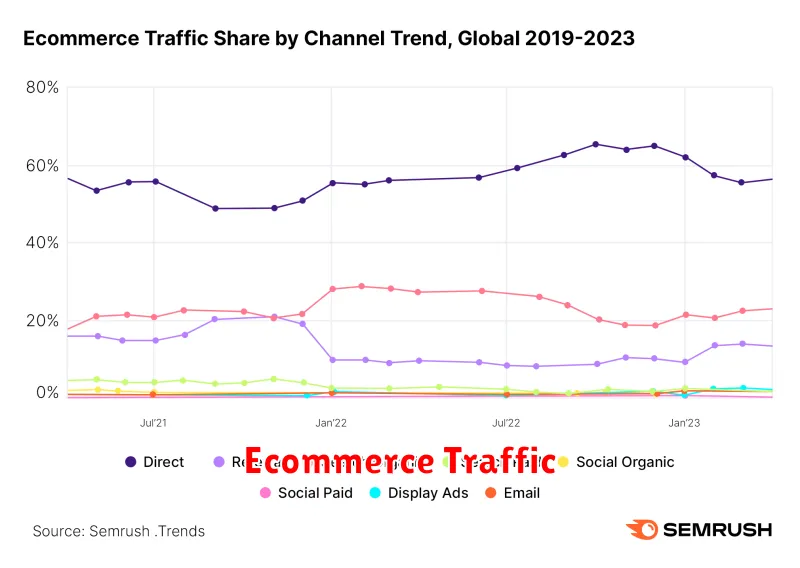Are you tired of seeing a stagnant number of visitors on your ecommerce store? Don’t you wish you had a way to drive traffic to your website and boost sales? Well, worry no more! This article will equip you with effective strategies that will transform your online business into a bustling hub of activity. We’ll delve into tried-and-true techniques to attract new customers, engage existing ones, and ultimately, drive traffic to your ecommerce store like a pro.
From mastering the art of search engine optimization (SEO) to leveraging the power of social media marketing, we’ll explore a range of strategies designed to elevate your ecommerce game. Whether you’re a seasoned online entrepreneur or just starting out, this comprehensive guide will provide you with actionable insights to effectively drive traffic and reach new heights of success. Get ready to unlock the secrets to a thriving online business!
Understanding Your Target Audience
Before you can start driving traffic to your ecommerce store, you need to understand who you’re trying to reach. Defining your target audience is crucial for developing effective marketing strategies. Ask yourself:
- Who are your ideal customers? Consider their demographics, interests, and online behavior.
- What are their pain points and needs? What problems do they face that your products can solve?
- Where do they spend their time online? Identify the platforms and websites they frequent.
- What motivates them to make a purchase? Understand their buying habits and preferences.
Once you have a clear understanding of your target audience, you can tailor your marketing messages and strategies to resonate with them. This will help you attract the right customers and increase your chances of conversion.
Optimizing Your Website for Search Engines (SEO)
SEO is crucial for any ecommerce store that wants to succeed. It’s how you get found by potential customers who are actively searching for the products you sell. When you optimize your website for search engines, you make it easier for Google and other search engines to understand what your site is about and what keywords are relevant to your products.
Here are some key steps to optimizing your ecommerce website for SEO:
Keyword Research
Before you can optimize your website, you need to know what keywords your target audience is using to search for products like yours. Use tools like Google Keyword Planner or Ahrefs to find high-volume, low-competition keywords. Incorporate these keywords naturally into your product descriptions, page titles, and meta descriptions.
On-Page Optimization
On-page optimization refers to the elements on your website itself that can impact your search engine ranking. This includes:
- Title tags: These are the blue clickable headlines that appear in search results. Keep them relevant to the page content and include your target keyword.
- Meta descriptions: These short summaries appear below the title tag in search results. Write compelling descriptions that encourage clicks.
- Image optimization: Use descriptive filenames and alt tags for your images to improve searchability.
- Internal linking: Link to other relevant pages on your website to improve user experience and help search engines understand your site’s structure.
- URL structure: Use clear and concise URLs that include relevant keywords.
Off-Page Optimization
Off-page SEO focuses on building authority and trust for your website from external sources. Some key strategies include:
- Link building: Earn backlinks from reputable websites to improve your website’s ranking. This can be done through guest blogging, social media engagement, and directory submissions.
- Social media marketing: Promote your website and products on social media platforms. Share valuable content and engage with your audience to build brand awareness.
- Local SEO: Optimize your website for local search queries. This is especially important for businesses with physical storefronts.
Remember, SEO is an ongoing process. Continuously monitor your website’s performance, track your progress, and adapt your strategies as needed. A strong SEO strategy can help your ecommerce store reach more customers and drive significant sales growth.
Leveraging the Power of Social Media Marketing
In today’s digital landscape, social media has become an indispensable tool for businesses of all sizes, especially for e-commerce stores. Leveraging the power of social media marketing allows you to reach a vast audience, build brand awareness, and drive traffic to your online store. With billions of users worldwide, platforms like Facebook, Instagram, Pinterest, and Twitter offer unparalleled opportunities to connect with potential customers and grow your business.
One of the key benefits of social media marketing is its ability to build strong brand relationships. By engaging with your audience, sharing valuable content, and responding to queries, you can foster trust and loyalty, creating a community around your brand. Social media provides a platform to showcase your products, highlight unique features, and share behind-the-scenes glimpses, giving potential customers a deeper understanding of your brand’s personality and values.
Social media marketing also allows you to target your audience effectively. By utilizing advanced targeting features available on most platforms, you can reach specific demographics based on interests, age, location, and other criteria. This targeted approach ensures that your marketing efforts are reaching the most relevant audience, maximizing your chances of conversions and sales.
Content is King: Create Valuable and Engaging Content
In the digital age, where consumers are bombarded with information, capturing their attention and driving traffic to your e-commerce store requires a powerful weapon: valuable and engaging content. This is where the adage “Content is King” reigns supreme. Creating content that resonates with your target audience is not just about driving traffic, but also about building trust, establishing expertise, and fostering brand loyalty.
To craft compelling content, you must understand your audience’s needs, interests, and pain points. Provide them with valuable information, insightful tips, or entertaining stories that address their concerns and offer solutions. This could include:
- Product reviews and comparisons: Help shoppers make informed decisions by providing detailed analyses of your products, highlighting their unique features and benefits.
- How-to guides and tutorials: Showcase your expertise by offering practical advice on how to use your products or solve common problems related to your industry.
- Behind-the-scenes content: Share glimpses into your company culture, manufacturing processes, or the stories behind your products to build a personal connection with your audience.
- Interactive content: Engage users with quizzes, polls, or contests to encourage participation and keep them entertained.
Remember, your content should be high-quality, informative, and visually appealing. Optimize your content for search engines using relevant keywords and ensure it is easily readable on all devices. By focusing on providing value and engaging your audience, you will attract more traffic, build a loyal following, and ultimately drive sales.
Email Marketing: Nurturing Leads and Driving Conversions
Email marketing remains a potent tool for e-commerce businesses to nurture leads and drive conversions. By strategically engaging your audience through personalized email campaigns, you can cultivate relationships, build brand loyalty, and ultimately boost sales.
Segmentation and personalization are key to successful email marketing. Divide your audience into segments based on demographics, purchasing history, and interests. This allows you to tailor your messages to specific needs and preferences, increasing engagement and relevance. Offer targeted promotions, product recommendations, and exclusive content based on individual user data.
Email automation streamlines your email marketing efforts. Utilize automated sequences for welcome messages, abandoned cart reminders, and post-purchase follow-ups. These automated messages ensure timely communication, nurturing leads throughout the customer journey.
Content is king in email marketing. Craft compelling email copy that is concise, informative, and visually appealing. Incorporate high-quality images, videos, and interactive elements to capture attention and encourage engagement. Provide valuable content like product tutorials, style guides, or behind-the-scenes glimpses to establish your expertise and build trust.
Track your results and analyze email metrics like open rates, click-through rates, and conversion rates. These insights provide valuable data to refine your email strategy and optimize campaign performance. By continuously monitoring and adapting your email marketing efforts, you can ensure you’re reaching the right audience with the right message at the right time.
Effective email marketing is a powerful engine for driving conversions. By leveraging segmentation, personalization, automation, and engaging content, you can transform your email campaigns into a valuable channel for nurturing leads and boosting your e-commerce sales.
Paid Advertising: Reaching Your Ideal Customers
In the competitive world of e-commerce, simply having a beautiful website and great products isn’t enough to guarantee success. You need to reach your ideal customers where they are: online. This is where paid advertising comes in.
Paid advertising platforms like Google Ads and Facebook Ads allow you to target specific demographics, interests, and behaviors, ensuring your ads reach the right people. By precisely targeting your audience, you can significantly increase your chances of converting them into paying customers.
Here’s how paid advertising can benefit your e-commerce store:
- Targeted Reach: Reach your ideal customers based on their demographics, interests, and online behavior.
- Measurable Results: Track your ad performance, measure ROI, and optimize your campaigns for maximum efficiency.
- Increased Brand Awareness: Gain visibility and build brand recognition among your target audience.
- Boost Sales & Conversions: Drive traffic to your website and encourage customers to make purchases.
Paid advertising offers a powerful tool to reach your ideal customers, drive traffic to your e-commerce store, and ultimately increase sales. It’s an investment that can deliver significant returns if done strategically and effectively.
Influencer Marketing: Partnering with Industry Experts
Influencer marketing is a powerful strategy to drive traffic to your ecommerce store. Partnering with industry experts can significantly boost your brand awareness and sales.
By collaborating with influencers, you can leverage their established audience and credibility. They can promote your products through engaging content, reviews, and recommendations. This can reach a wider audience and build trust in your brand.
When choosing industry experts, focus on those who align with your target audience and brand values. Consider influencers with a strong following and a proven track record of success. Building a long-term relationship with influencers can yield sustained results.
Here are some tips for partnering with industry experts:
- Define your campaign goals: Clearly communicate your objectives to influencers.
- Offer valuable incentives: Provide incentives that are relevant to the influencer’s audience.
- Track your results: Monitor campaign performance to measure ROI.
Partnering with industry experts can be a rewarding strategy for driving traffic and boosting sales. By leveraging their expertise and influence, you can reach a larger audience and create a buzz around your brand.
Affiliate Marketing: Expanding Your Reach
Affiliate marketing can be a powerful tool to expand your reach and drive traffic to your ecommerce store. By partnering with other businesses and influencers, you can tap into their audiences and introduce your products to a wider pool of potential customers. Affiliate marketers are motivated to promote your products because they earn a commission for each sale they generate, making it a mutually beneficial relationship.
To effectively leverage affiliate marketing, it’s crucial to identify the right partners. Look for individuals or businesses with an audience that aligns with your target market. Building relationships with these partners is key to a successful affiliate program.
Consider offering competitive commission rates and providing resources and support to your affiliates to help them effectively promote your products. By investing in your affiliate program, you can generate substantial traffic, boost sales, and cultivate a strong brand presence within your industry.
The Importance of User Experience (UX)
In the competitive world of e-commerce, attracting traffic to your online store is only half the battle. User experience (UX) plays a crucial role in transforming casual visitors into loyal customers. A positive UX fosters engagement, encourages repeat visits, and ultimately drives sales.
Think of your online store as a physical storefront. Would you tolerate a cramped, cluttered shop with confusing signage and unhelpful staff? Likely not. The same principle applies online. A website that is difficult to navigate, slow to load, or riddled with technical glitches will quickly drive customers away. On the other hand, a well-designed website that is intuitive, visually appealing, and easy to use will leave a lasting impression and encourage customers to explore your offerings.
Here are some key aspects of UX that are vital for e-commerce success:
- Website Design: A clean, modern design with clear calls to action and a visually appealing layout is essential. Consider using high-quality product images and videos, as well as consistent branding elements.
- Navigation: Make it easy for customers to find what they’re looking for. Use intuitive menus, search functionality, and product filtering options.
- Mobile Optimization: With more people browsing online on their smartphones, a responsive website design that adapts seamlessly to different screen sizes is crucial.
- Checkout Process: A streamlined checkout process that is secure and hassle-free is essential. Minimize the number of steps, offer multiple payment options, and provide clear shipping information.
- Customer Support: Provide prompt and helpful customer support via live chat, email, or phone. Address customer concerns quickly and efficiently.
Investing in UX is an investment in your e-commerce success. By creating a positive and user-friendly experience, you can turn casual visitors into loyal customers and drive significant revenue growth for your online store.
Analyzing and Tracking Your Traffic
Understanding your website traffic is essential for any ecommerce store owner. It allows you to identify what’s working and what’s not, so you can make data-driven decisions to improve your marketing efforts and ultimately, your sales. Here are some key metrics to analyze and track:
Website Traffic Sources:
- Organic Search: This refers to traffic from search engines like Google, Bing, and Yahoo, where users find your site by searching for relevant keywords.
- Social Media: Traffic from social media platforms like Facebook, Instagram, and Twitter, where users click on links shared in your posts or ads.
- Paid Advertising: Traffic generated through paid advertising campaigns on search engines, social media, or other platforms.
- Email Marketing: Traffic from email campaigns sent to your subscribers.
- Referral Traffic: Traffic from links on other websites, blogs, or forums.
- Direct Traffic: Visitors who type your website’s address directly into their browser or bookmark it.
Traffic Behavior:
- Bounce Rate: The percentage of visitors who leave your website after viewing only one page.
- Average Session Duration: The average amount of time visitors spend on your website.
- Pages Per Session: The average number of pages visitors view during a session.
- Conversion Rate: The percentage of visitors who complete a desired action, such as making a purchase, signing up for a newsletter, or downloading a resource.
Tools for Analyzing and Tracking Traffic:
- Google Analytics: A free and powerful tool that provides detailed insights into your website traffic.
- Facebook Pixel: Allows you to track website traffic from Facebook and Instagram.
- Google Tag Manager: Helps you manage website tags, including those for analytics, tracking, and remarketing.
By understanding your traffic sources, behavior, and conversion rates, you can optimize your marketing strategies to attract more qualified visitors and drive more sales for your ecommerce store.
Building a Strong Brand Identity
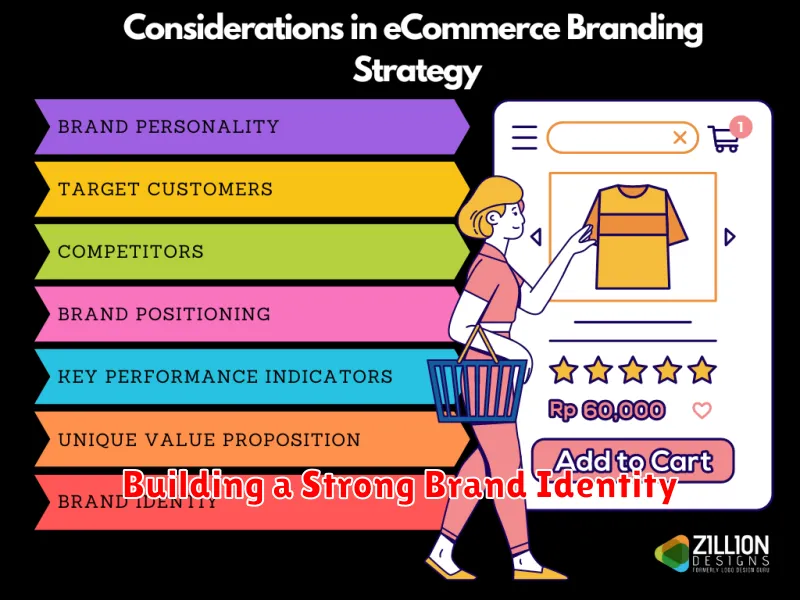
A strong brand identity is the foundation of a successful ecommerce store. It’s what sets you apart from the competition and helps you attract and retain customers. It’s more than just a logo; it’s a promise to your customers about what they can expect from your brand.
Here are some key elements of building a strong brand identity:
- Define your target audience: Who are you trying to reach? What are their needs and desires? Understanding your target audience is essential for creating a brand that resonates with them.
- Develop a unique value proposition: What makes your brand different from the competition? What value do you offer that others don’t? Clearly communicating your unique value proposition is crucial for attracting customers.
- Create a consistent brand voice and tone: Your brand’s voice and tone should be consistent across all platforms, including your website, social media, and marketing materials. This helps to create a cohesive brand experience for customers.
- Design a memorable logo and visual identity: Your logo and visual identity should be visually appealing and easily recognizable. They should reflect your brand values and personality. Consider using a consistent color palette and typography for a more cohesive look.
- Build a strong brand story: Your brand story is what connects with your customers on an emotional level. It’s the reason behind your brand, your mission, and your values. Sharing your brand story can help you build trust and loyalty with your customers.
Building a strong brand identity takes time and effort, but it’s an investment that will pay off in the long run. A strong brand identity will help you attract more customers, increase sales, and build a loyal following.
Creating Irresistible Offers and Promotions
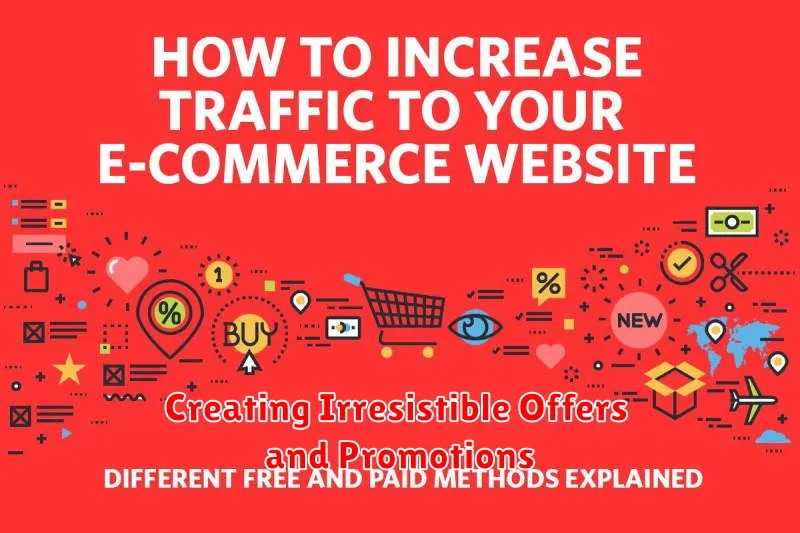
In the competitive world of e-commerce, attracting and retaining customers requires more than just a well-designed website. You need to offer compelling incentives that drive traffic and convert visitors into loyal customers. This is where irresistible offers and promotions come into play.
Discounts and Sales are a classic way to attract customers, but don’t just offer a generic discount. Consider offering targeted discounts based on specific products, customer segments, or purchase history. Bundling multiple products together at a discounted price can also entice customers to buy more.
Free Shipping is a highly effective promotion that can incentivize customers to complete their purchase. Offer free shipping on orders over a certain amount, or during specific periods like holidays or weekends. Free Gifts with purchase are another excellent way to encourage customers to buy, especially when the gift is relevant to the product they are purchasing.
Exclusive Offers and Early Access create a sense of urgency and exclusivity. Offer limited-time deals, early access to new products, or special discounts for subscribers or members. These promotions can create a sense of reward and motivate customers to make a purchase.
Contests and Giveaways are a fun and engaging way to drive traffic and generate excitement around your brand. Run contests on social media or your website with valuable prizes related to your products. Loyalty Programs reward returning customers for their continued patronage. Offer points for purchases, exclusive discounts, or early access to promotions for loyal members.
Remember to track the effectiveness of your promotions using analytics tools to determine what resonates with your audience. Regularly analyze the data and adjust your strategies accordingly to optimize your campaign results.
Leveraging Customer Reviews and Testimonials
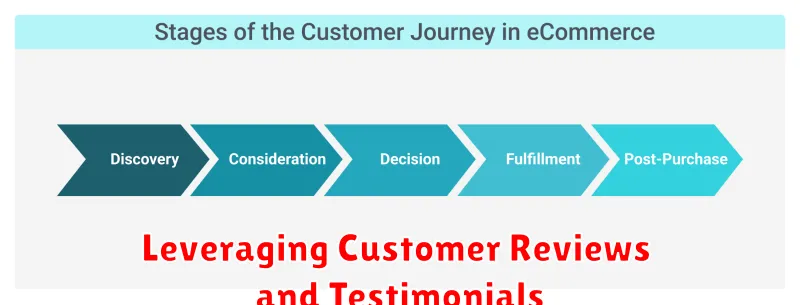
Customer reviews and testimonials are powerful tools for driving traffic to your ecommerce store. They provide social proof, build trust, and increase conversions. By showcasing positive customer experiences, you can convince potential buyers that your products are worth their investment.
Here are some effective strategies for leveraging customer reviews and testimonials:
- Make it easy for customers to leave reviews. Include review forms on your product pages and send follow-up emails requesting feedback.
- Showcase reviews prominently on your website. Display reviews on product pages, homepages, and landing pages.
- Use a variety of review formats. Integrate video testimonials, star ratings, and written reviews for a comprehensive approach.
- Highlight reviews from credible sources. Feature reviews from industry experts, influencers, or high-profile customers.
- Address negative reviews constructively. Respond to negative reviews professionally and offer solutions to improve customer satisfaction.
- Use reviews in your marketing materials. Incorporate customer testimonials into your email campaigns, social media posts, and advertising.
By effectively leveraging customer reviews and testimonials, you can increase your store’s credibility, build trust with potential buyers, and drive significant traffic to your website.
Providing Excellent Customer Service
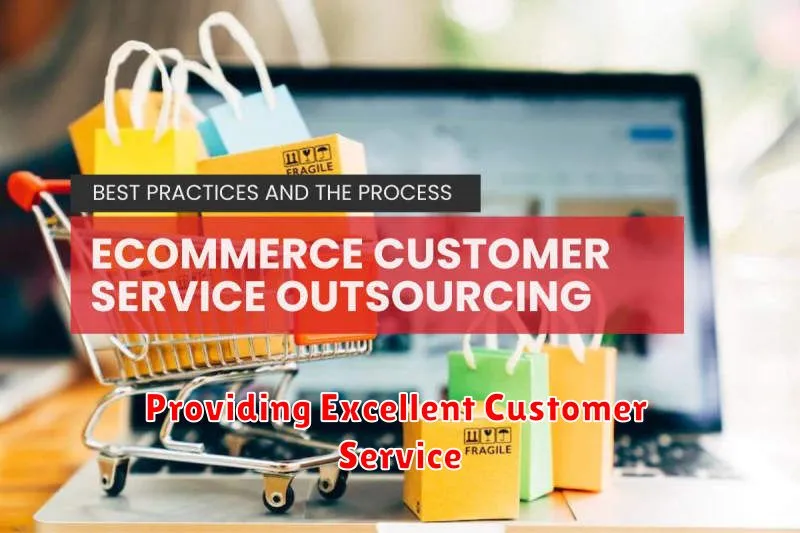
In the competitive landscape of e-commerce, customer service is not just an afterthought, it’s a vital driving force for success. When you prioritize providing excellent customer service, you build trust, loyalty, and ultimately, more traffic to your store.
Here are some key aspects of providing excellent customer service that will drive traffic to your e-commerce store:
- Responsiveness: Customers expect prompt and efficient responses to their inquiries. Whether through email, chat, or phone, ensure you have a system in place to address customer needs quickly and effectively.
- Personalization: Take the time to understand individual customer preferences. Tailor your communication and product recommendations to their specific needs and interests. This level of personalization creates a more engaging and valuable experience.
- Problem Solving: Go above and beyond to address customer issues and concerns. A seamless return policy, proactive communication, and a willingness to find solutions will earn you customer loyalty.
- Proactive Communication: Keep customers informed at every stage of their journey. Send timely updates on order processing, shipping, and any potential delays. Proactive communication fosters trust and reduces customer anxiety.
- Customer Feedback: Actively solicit feedback from your customers. Use surveys, reviews, and social media to gather insights into their experiences. Address any negative feedback promptly and use it to improve your service.
By prioritizing excellent customer service, you’ll create a positive experience that encourages repeat business and positive word-of-mouth. Remember, happy customers are your best advocates, driving more traffic and sales to your e-commerce store.
Staying Ahead of the Curve: Ecommerce Trends to Watch
The world of ecommerce is constantly evolving, and staying ahead of the curve is essential for any business that wants to thrive. Here are a few of the key trends to watch in 2023:
Personalization: Consumers are increasingly demanding personalized experiences, and ecommerce is no exception. This means using data to understand customer preferences and tailoring the shopping experience accordingly. This can include everything from product recommendations to targeted email marketing.
Mobile-first Shopping: Mobile devices are now the primary way for many people to shop online. This means having a mobile-friendly website and app is crucial. Ecommerce stores should also optimize for mobile search and make sure their checkout process is easy and streamlined on mobile devices.
Social Commerce: Social media platforms are becoming increasingly important for ecommerce businesses. This is because they offer a direct way to connect with customers and drive sales. Ecommerce stores should use social media to showcase their products, run contests, and offer exclusive deals.
Livestream Shopping: This interactive shopping experience is gaining popularity. It allows customers to interact with brands and ask questions in real-time, making the shopping experience more engaging. Ecommerce stores can leverage this trend by hosting livestreams on their website and social media platforms.
Sustainable Practices: Consumers are becoming more environmentally conscious and are looking for brands that share their values. Ecommerce stores should consider adopting sustainable practices such as using eco-friendly packaging and sourcing products from ethical suppliers.
By staying informed about these trends and adapting your business accordingly, you can ensure that your ecommerce store remains competitive in the ever-evolving digital landscape.

